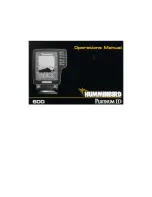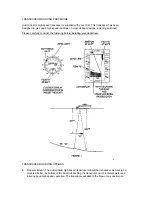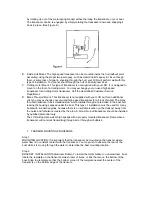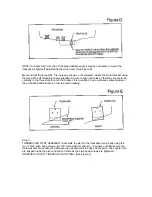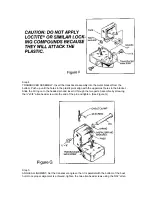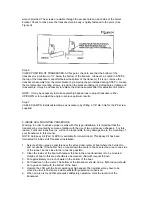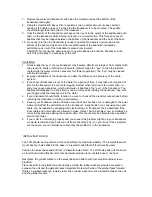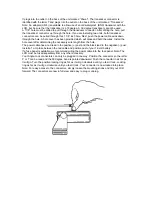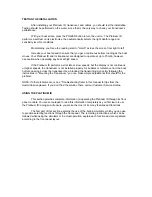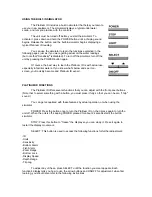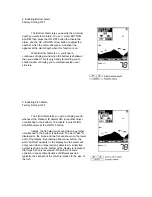
TESTING THE INSTALLATION
After installing your Platinum ID, transducer, and cables, you should test the installation.
Testing should be performed on the water, since that is the only way to check your transducer's
performance.
With your boat at idle, press the POWER button to turn the unit on. The Platinum ID
performs a self-test on its electronics, then automatically selects the right depth range and
sensitivity level for conditions.
Momentarily, you'll see the reading start to "march" across the screen from right to left.
Increase your boat speed to ensure that you get a continuous bottom reading as the boat
moves. Your Platinum ID and its transducer are designed to operate at up to 75 mph; however,
use caution when operating any boat at high speed.
If the Platinum ID performs well at idle or slow speeds, but the display is not continuous
at higher speeds, the transducer is not installed properly. Air bubbles or turbulence from the boat
hull are passing across the transducer face, blocking the transmitting signal. By following the
instructions in "Mounting the Transducer," you can make simple adjustments that should fix the
problem.
NOTE: If other problems occur, see "Troubleshooting" later in this manual for tips from the
Humminbird engineers. If you don't find the solution there, call our Customer Service Hotline.
USING THE PLATINUM ID
This section provides complete information on operating the Platinum ID through its front
panel controls. You are encouraged to read this information completely as you first learn to use
the Platinum ID; doing so will ensure you make the most of its many features and functions.
The first part of this section explains the use of the built-in simulator, which you can use
to practice selecting functions through the front panel. The remaining instructions, which can be
followed while using the simulator or in actual operation, explain each function and are organized
according to the front panel layout.
Summary of Contents for Platinum ID 600
Page 1: ......

